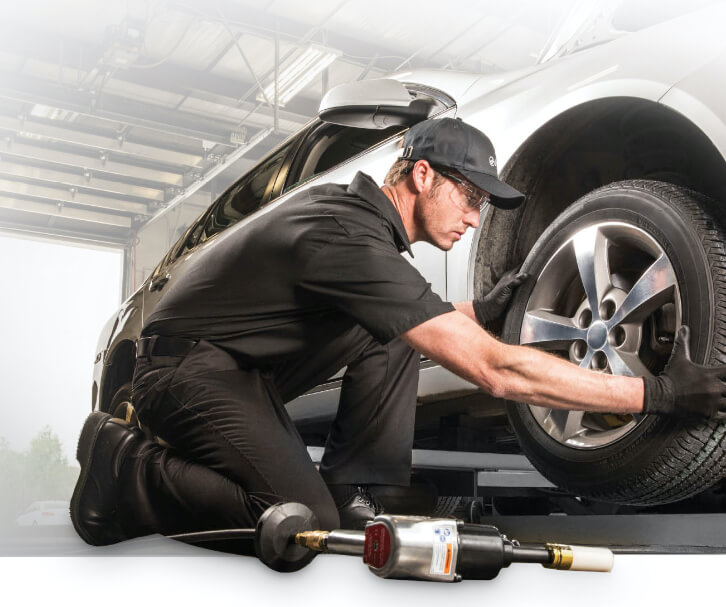Open Efficiency: Expert GMC Tire Service at Morris Tires
Open Efficiency: Expert GMC Tire Service at Morris Tires
Blog Article
Tire Service: The Effect of Climate Problems
When it involves making certain optimum efficiency and safety when traveling, recognizing the effect of weather on tire solution is critical. From scorching warm to icy roads, each climate aspect can substantially influence tire functionality and total driving experience. By delving right into the impacts of varying climate condition on tires, drivers can obtain important understandings that may enhance their vehicle's efficiency and longevity. In this discussion, we will certainly check out the elaborate relationship between weather condition conditions and tire solution, shedding light on the significance of weather-specific tire upkeep methods and factors to consider.
Heat and Tire Performance
When subjected to heats, tires experience changes in performance that can considerably affect lorry safety and handling. The heat produced from extended driving or heat conditions triggers the tire rubber to soften, causing lowered tread life and enhanced wear. As the rubber becomes softer, the tire's hold when traveling lessens, influencing stopping ranges and total grip. In severe instances, too much warmth can also create tire blowouts, positioning a serious safety threat to the car and its passengers.

Cold Weather Condition Results
Cold climate conditions can have a significant effect on tire efficiency and safety and security. As temperature levels decrease, tire rubber can solidify, causing lowered grip on icy or snow-covered roadways. In cool climate, tires might additionally shed atmospheric pressure a lot more quickly, which can impact handling and gas efficiency. Additionally, cool temperature levels can cause tire sidewalls to stiffen, enhancing the risk of damage from holes or other roadway dangers.
To alleviate the effects of winter on tires, it is crucial to routinely examine tire stress and inflate them to the producer's recommended degrees. Using winter months or all-season tires created for winter problems can also boost traction and grasp on icy or snowy roads. Correct tire maintenance, consisting of routine evaluations for wear and damages, ends up being much more critical throughout colder months to make sure optimal performance and safety and security.
Rainy Conditions Influence
Tires with worn-out treads are much more susceptible to hydroplaning, where a layer of water constructs up in between the roadway and the tire surface area, leading to loss of grip. To combat this, drivers ought to regularly inspect their tires for sufficient walk depth and think about investing in tires particularly developed for damp conditions.
Additionally, wet climate can likewise reduce exposure, making it challenging for motorists to see the roadway in advance clearly (GMC Tire Service). In such problems, it is important to readjust driving rates as necessary and keep a risk-free complying with distance to enable for unexpected quits. Effectively filled with air tires can likewise aid in keeping control on damp roads by providing far better handling and hold
Snow and Tire Safety And Security
When driving in snowy problems, having the right tires can make a substantial difference in security and efficiency. Winter season tires are made with special rubber substances and step patterns to offer far better traction on snow and ice compared to all-season tires.

It is essential to follow supplier guidelines when utilizing and installing tire chains to protect against damage to the tires and vehicle. By picking the best tires, keeping appropriate rising cost of living, and considering added traction help like tire chains, chauffeurs can enhance their security when navigating snow-covered roads.
Weather-Related Tire Upkeep
Weather-related tire upkeep incorporates a variety of techniques aimed at guaranteeing optimum tire function and durability in various climate situations. One crucial aspect of weather-related tire maintenance is tire pressure law. Examining tire walk routinely and replacing tires when step wear gets to a certain depth is important for preserving grip and security in adverse weather condition.
Verdict
In conclusion, weather problems have a substantial influence on tire efficiency and safety and security. From warmth influencing tire stress and put on to cool weather condition decreasing traction, it is important to consider the weather condition when maintaining and using tires.
In this conversation, we will explore the detailed connection between climate problems and tire service, losing light on the value of weather-specific tire maintenance techniques and considerations.

Report this page